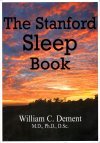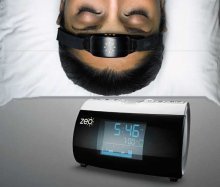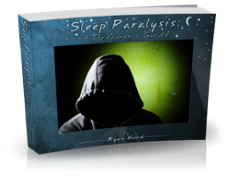
| Connect & Subscribe |
Stop the Snoring, Save a Life
An Outreach Project by Kathleen Ojeda, Spring 2010 | Return To Outreach Projects 2010
In 2006, Forbes published a list of our most common fears. Number three on the list: fear of water, related to drowning [1]. Imagine: you thrash under the water, desperate to break the surface. Your lungs begin to burn as you are unable to take a breath. Your vision darkens, and you become disoriented as the oxygen level in your brain and other vital organs becomes dangerously low.
Whether or not you happen to be an aquaphobe, this is clearly an undesirable state of affairs, and one to be avoided at all costs. However, 30 million Americans are experiencing a nearly identical situation on a nightly basis, and do absolutely nothing to prevent it.
It is estimated that one in four men and one in eleven women suffer from Obstructive Sleep Apnea, a sleep disorder that is characterized by the cessation of airflow of airflow in the nose and mouth during sleep [2].
When we are awake and breathing, the throat muscles contract with every inhale to hold the throat open. When we are sleeping, the vigor of this muscle contraction is reduced, which can cause a partial obstruction of the throat; when we pull air through this constricted opening, the throat muscles vibrate, resulting in snoring. If a snorer has a naturally small throat, or perhaps rolls onto his back, the force of gravity in this prostrate position can pull the tongue back into the throat and completely block the movement of air. The body will then begin to struggle for air as the oxygenation level drops, building up pressure as it pulls increasingly strongly against the blockage in the throat.
If there is no inspiration for at least ten consecutive seconds, this is called a sleep apnea episode, and it is only terminated when the sleeper is awakened by the body's fight to breathe [3].
The awareness of just one such episode of unconscious asphyxiation would be a sufficient cause for alarm in most people. However, even the mildest cases of Obstructive Sleep Apnea are characterized by at least five sleep apnea episodes per hour of sleep. In severe cases, the number of episodes can be greater than 45; in an 8 hour period, a sleeper with severe Obstructive Sleep Apnea will become unable to breathe for at least 10 seconds and wake up 360 times--that's about every 1.3 minutes!
And it gets worse: each arousal will last only seconds, and is rarely remembered. Thus an incredible number of individuals will live their entire (often shortened) lives with this disorder and never realize it.
It is almost impossible to exaggerate the devastating effect that severe Obstructive Sleep Apnea can have on your quality of sleep. Imagine if someone was constantly at your side, and never allowed you to sleep more than a few minutes at a time. This is certainly not healthy, for your body or your mind. Individuals who live with untreated Obstructive Sleep Apnea are never able to get the restorative sleep they desperately need, and this manifests itself in an array of daytime complications.
In essence, they are chronically fatigued; this can cause a lack of energy, or depression. It can also cause an increased propensity for mental error or accidents, and in the worst case scenario, death. In fact, according to renowned sleep researcher Dr. William Dement, there is a valid case that drowsy driving is more dangerous than drunk driving.
Fortunately for the 30 million Americans living with Obstructive Sleep Apnea, chronic fatigue, and for all those who share the road with them, this disorder is incredibly easy to diagnose and treat. (In fact, go here for information on how to get diagnosed from the comfort of your own home.)
Common signals are a complaint of persistent tiredness, particularly even after having slept for several hours. Often this manifests more as the sense of a significantly decreased energy level compared to the past. The physiological effects of prolonged periods of stress on the heart and lungs can cause high blood pressure. In fact, 50,000 premature deaths from complications like stroke and heart attack occur every year due to untreated sleep apnea.
However, the most indicative signal that an individual suffers with this disorder is a loud, interrupted snore. If you or someone you know snores, let them know about Obstructive Sleep Apnea. The treatment is simple, and the health benefits are tremendous. Regain a level of energy you never thought possible. Stop the snoring, and save a life.
Have an experience with sleep apnea? Share it with us here. Or read the stories of others here.
References
- Van Dusen, A. (2006, December 14). Our Most Common Fears. Forbes.com. Retrieved May 24, 2010 from http://www.forbes.com/2006/12/13/most-common-fears-forbeslife-cx_avd_1214commonfears.html
- Dement, W.C. (2002). Obstructive Sleep Apnea. In The Stanford Sleep Book (pp. 333-360). USA.
- Victor, L.D. (1999, November 15). Obstructive Sleep Apnea. American Family Physician. Retrieved May 24, 2010 from http://www.aafp.org/afp/991115ap/2279.html
About This Site
Welcome! This site is continuously being created by students of Dr. William C. Dement's Sleep And Dreams course at Stanford University.
We made this site as a call to action for people all over the world to live healthier, happier, safer, and more productive lives by learning about their own sleep. We have faith that reading the information provided on this site will motivate you to be smart about your sleep deprivation and strategic about your alertness in order to live life to your fullest, most energetic potential.
In fact, we challenge you to do so! What do you say, are you up for the challenge?
Interviews With Sleep Specialists: Insights Into the Worlds of Sleep Medicine & Sleep Business
America's Most Dangerous Disorder: What Is Sleep Apnea Doing To Your Sleep?
Sleep Debt: How Much More Will You Achieve When You Reduce Yours?
The Stages Of Sleep: The Journey Through The Night
Delayed Sleep Phase: You Want To Sleep But You're Not Tired Yet
Paralyzed at Night: Is Sleep Paralysis Normal?
Sleep In Words: Smart, Strange, and Funny Quotes About Sleep
Sleep Disorders In Children: What's Keeping Your Child From A Full Night's Rest?
Attacks of Pavor Nocturnus (a.k.a. Sleep Terrors, Night Terrors, or Incubus Attacks)
The Stanford Sleep Book
Dr. Dement's pioneering textbook has been the core text for Sleep and Dreams since 1980, but it has just recently been made available to the wider public for the first time.
In it you'll find a more detailed account of the most important things you need to know about sleep, alertness, dreams, and sleep disorders. Studies, statistics, plus plenty of Dr. Dement's classic anecdotes painting the history of sleep medicine.
Preface | Intro | Contents | Get A Copy
More Sleep Resources
The Zeo
A revolution in personal sleep tracking, the Zeo is a wireless headband that transmits your brainwaves in realtime to a dock (pictured here) or your smartphone. The result? You can wake up and see exactly what stages of sleep you were in during the night! Unprecedented personalized sleep knowledge.
Sleep Paralysis: A Dreamer's Guide
Ever woken up paralyzed? A surprising number of us have, believe it or not. But few know the actual causes of this phenomenon, and fewer still how to exert control over it. Dream researcher and sleep paralysis expert Ryan Hurd shares breakthrough insights into how to do just that.
Important Disclaimer
Please Note:
The information found on this page and throughout this site is intended for general information purposes only. While it may prove useful and empowering, it is NOT intended as a substitute for the expertise and judgments of healthcare practitioners.
For more info, see our
Terms of Use.









